Speak to modern representational painters, and there are three artists whose names repeatedly crop up among their favourites: John Singer Sargent, Joaquín Sorolla y Bastida, and Anders Zorn. All three were active in the final years of the nineteenth and early twentieth centuries, and all three had distinctive styles which were in the broadest sense impressionist.
Anders Leonard Zorn (1860-1920)
Born in Mora, south-central Sweden, in 1860 he was brought up on the family farm, but was never seen by his father, a Bavarian brewer. In 1875 he started his studies at the Royal Swedish Academy in Stockholm, where he distinguished himself painting folk studies in watercolour. In 1880 he started professional portraiture, and was quickly in demand in Stockholm.
In 1881 he left the Academy following a dispute with its Director, then travelled to London, Paris, and Spain. The following year he continued his tour through Gibraltar, Rome, Paris, and London. His first watercolour was accepted for the Paris Salon, amid favourable press reviews.
In 1883 he started to learn etching techniques in London, returned to Sweden for the summer, and went back to London where he exhibited at the Royal Academy. In 1884 he travelled to Portugal and Madrid, and to London. He returned to Sweden to marry in 1885, then exhibited again at the Royal Academy. He was awarded the Royal Order of Vasa in recognition of his artistic achievements, the first of a succession of Swedish honours to be bestowed on him.
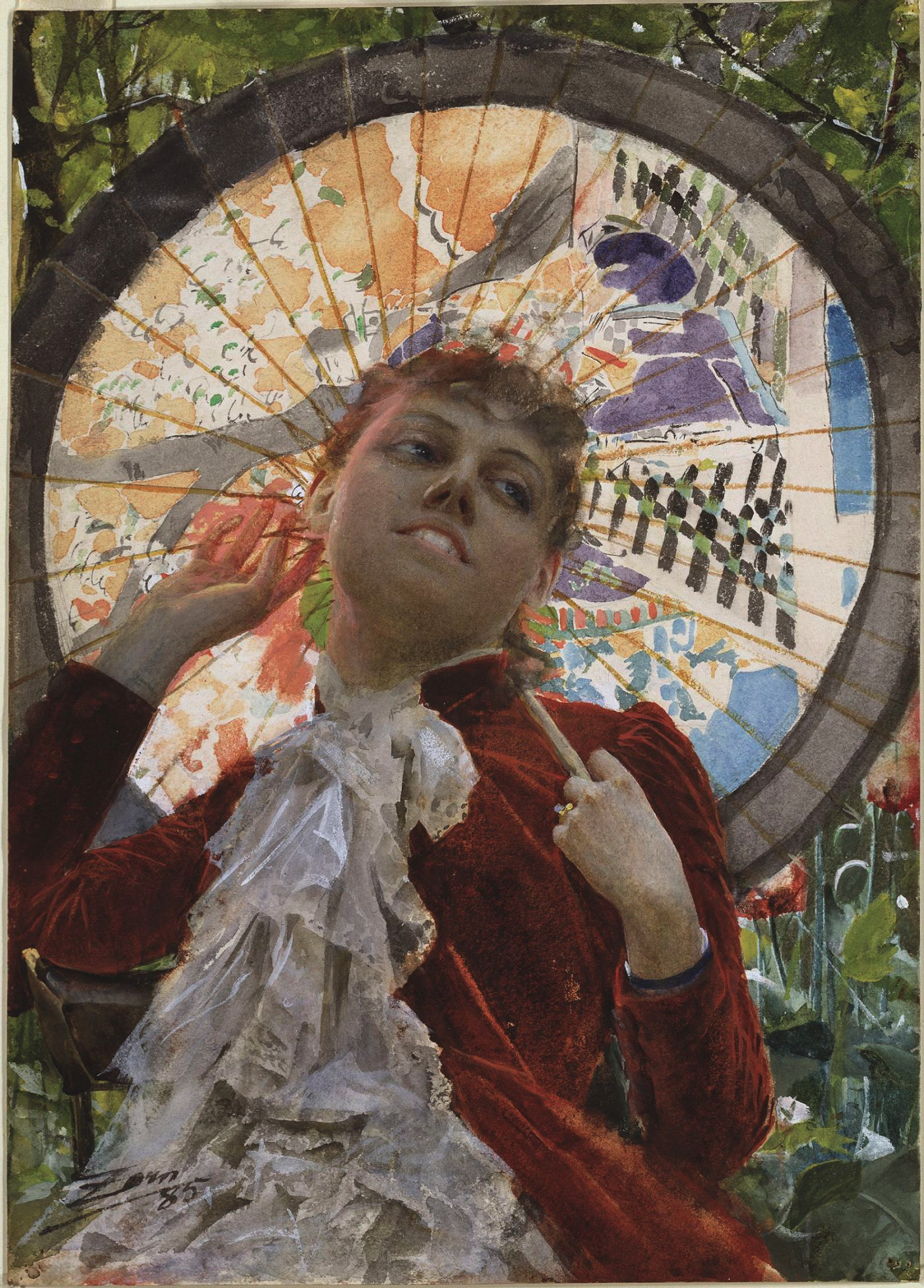
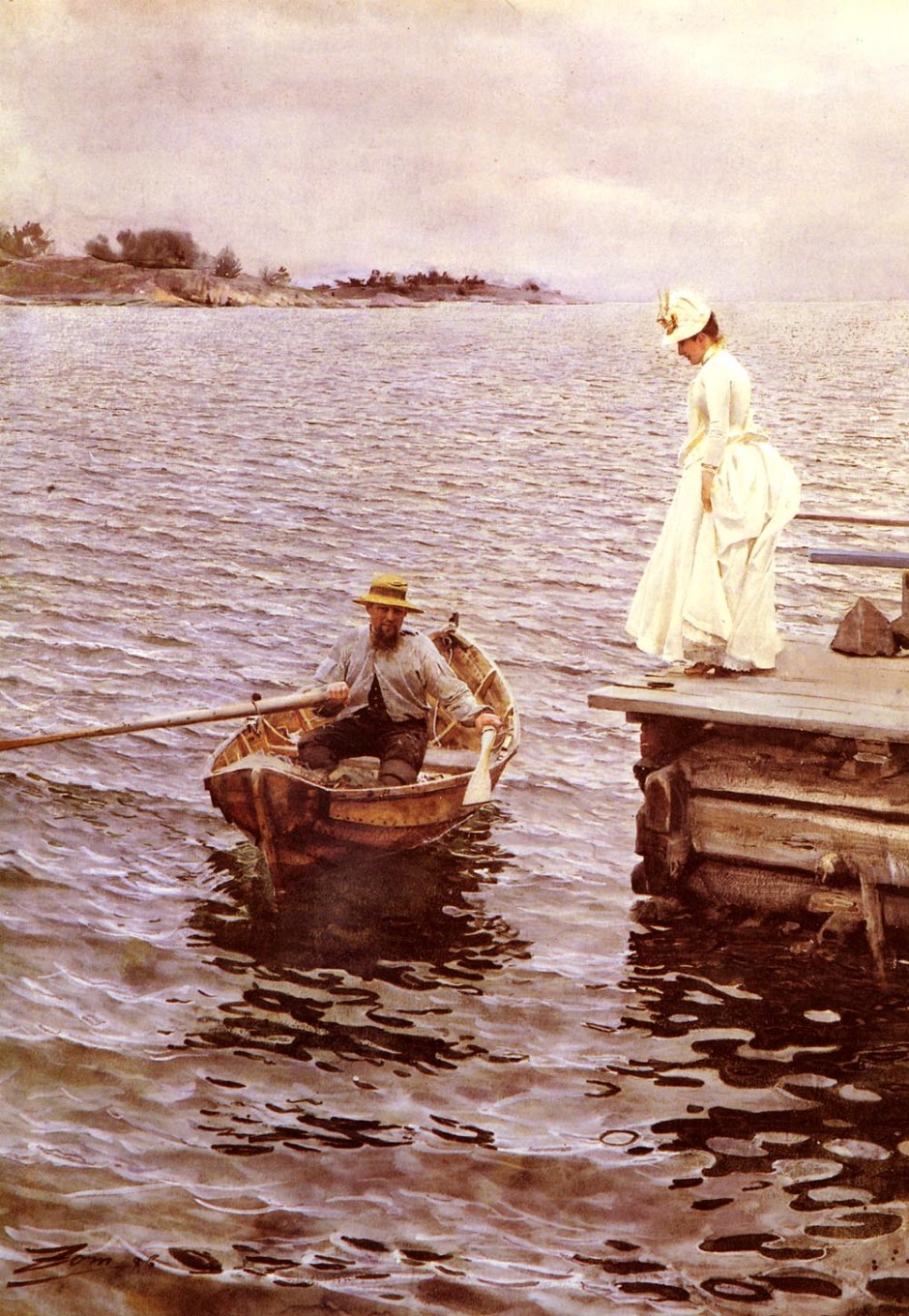
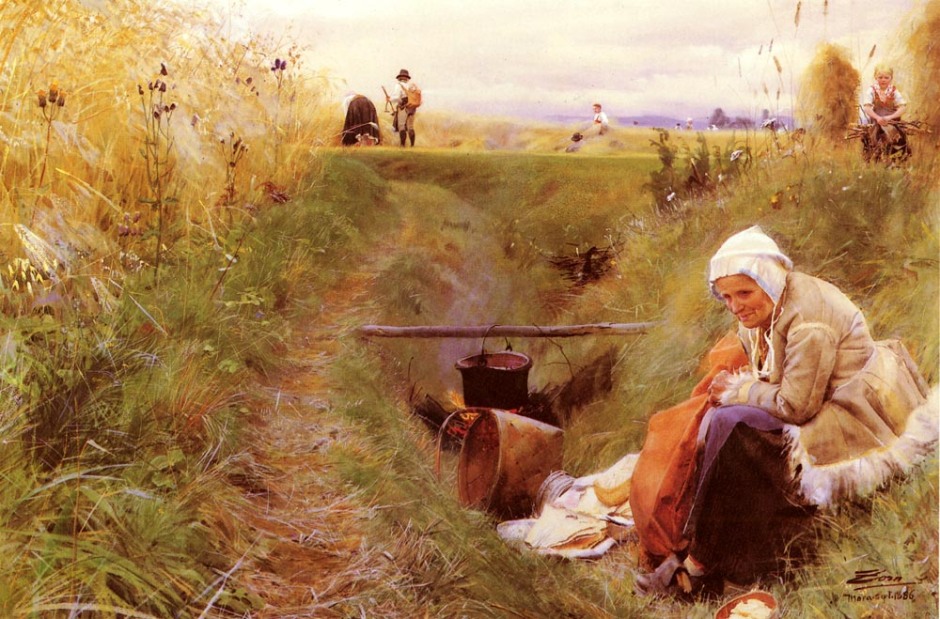
During the later 1890s, his style slowly became less strictly realist, and by the end of that decade his brushstrokes were clearly visible in most of his non-commissioned paintings. He also started to paint the first of his famous female nudes, using mostly amateur models from around his home town, which earned him a reputation. He continued these throughout his career, later in engravings, and sometimes with the aid of photographs.
He travelled extensively in Europe, enjoying a lucrative and successful career in portraiture. He visited Spain and Algeria in 1887, producing many fine paintings there.
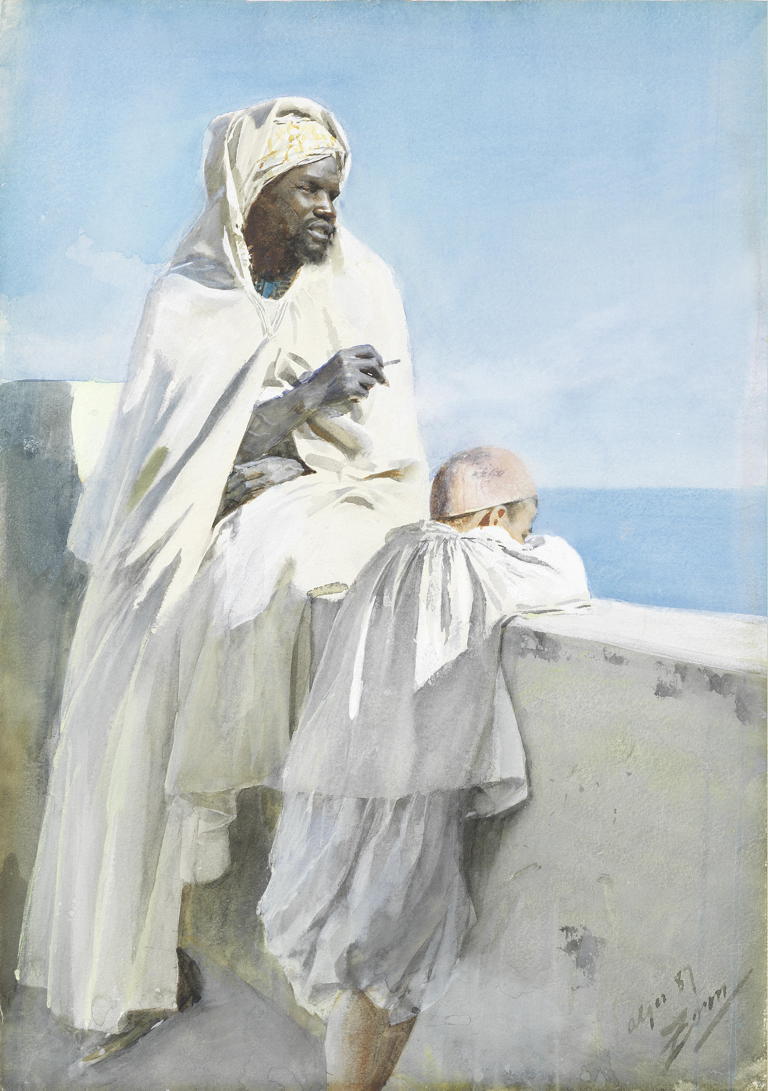
He continued to exhibit at the Paris Salon and the Royal Academy, and in 1887-8 spent time in Saint Ives and the rest of Cornwall.

Paris and impressionism
He then stayed in Paris from 1888-1896, where he earned his family a good living from painting portraits.

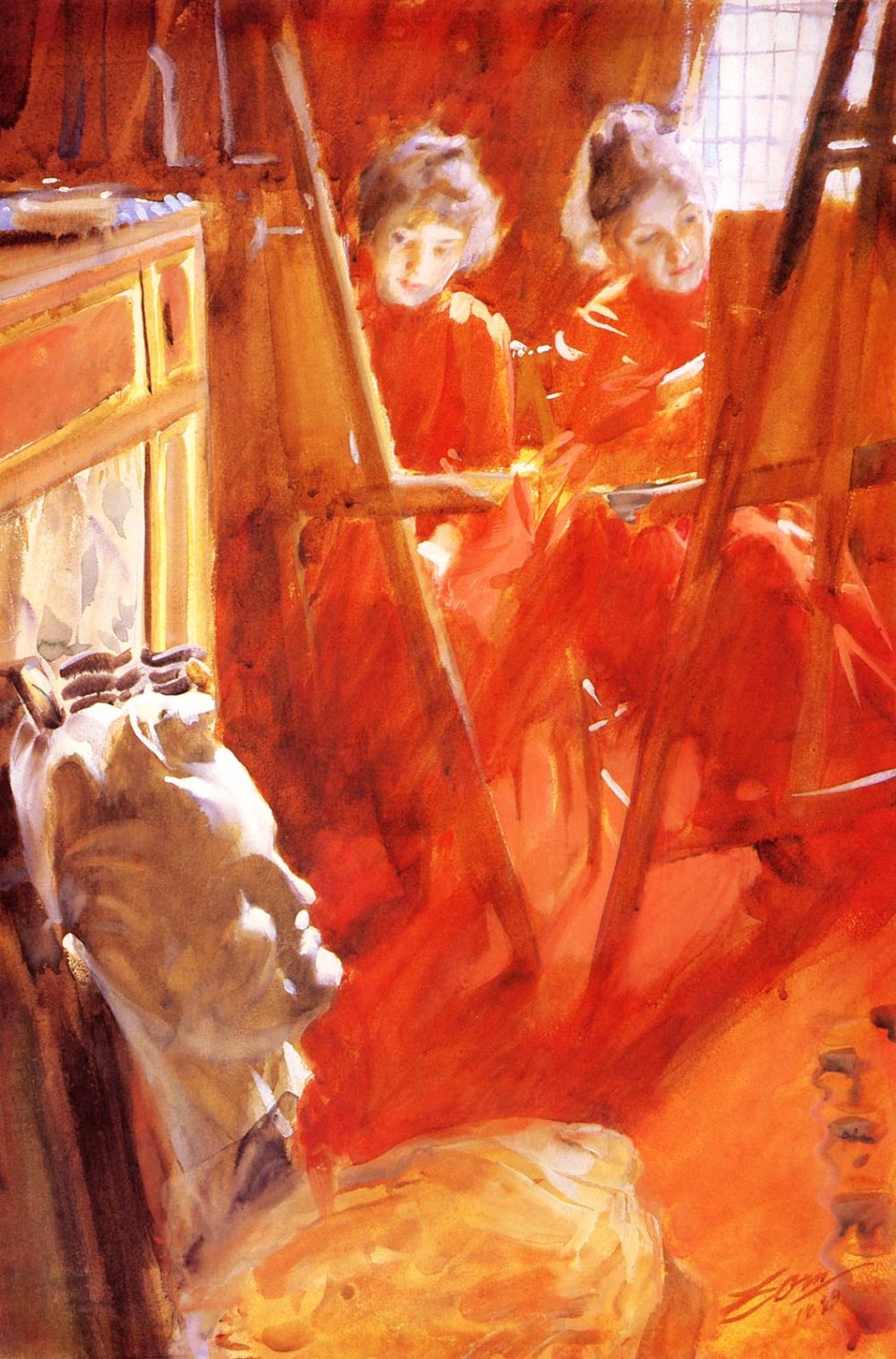
His big breakthrough occurred at the Paris World Exposition of 1889, where he was awarded a first class medal. Following that he was in even greater demand for portrait commissions. He returned periodically to Sweden, though, to paint more rural and genre works.
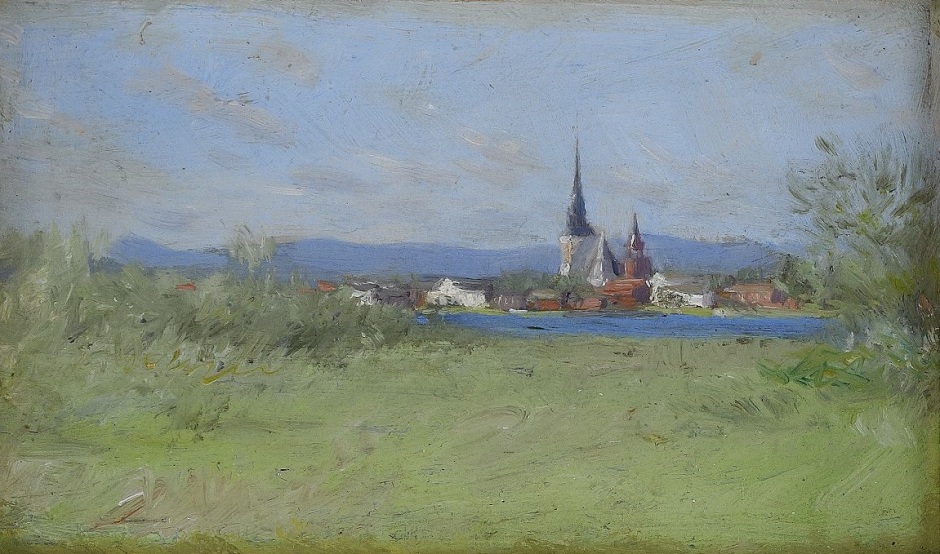
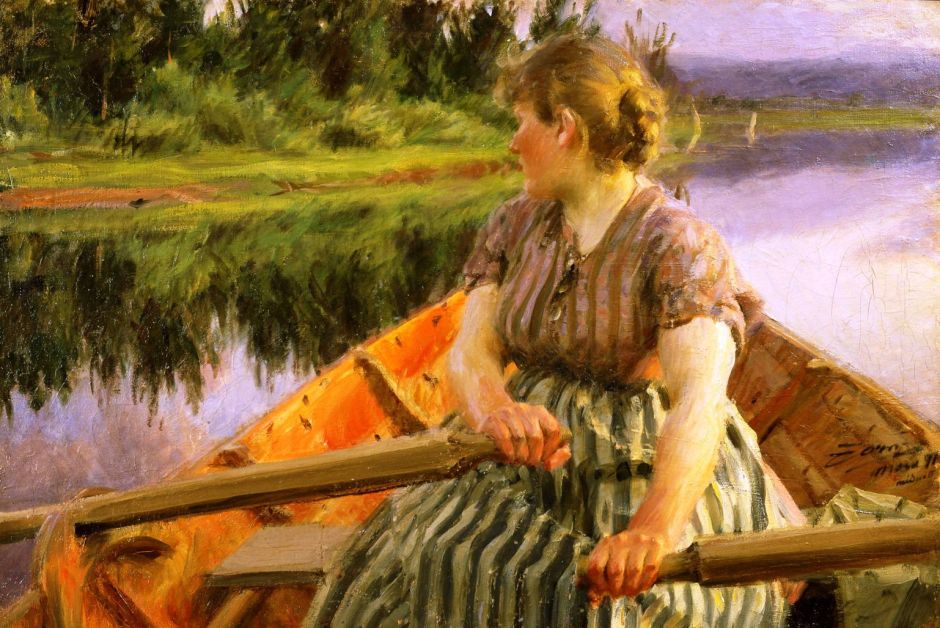


Tours in the USA
In 1893 he toured the USA for the first time, staying for almost a year. He followed that up by organising and touring with a Swedish exhibition there in 1895.

His portrait of Mrs (Bertha) Potter Palmer is particularly relevant to Impressionism, as she was one of the early purchasers of substantial numbers of Impressionist paintings, many from the dealer Durand-Ruelle. Her husband had started the store which became Marshall Field’s, and had large investments in a luxury hotel and property. She took an active part in the business, and in the year of this portrait was head of the Board of Lady Managers at the World’s Columbian Exposition in Chicago, which opened just before she sat for Zorn.
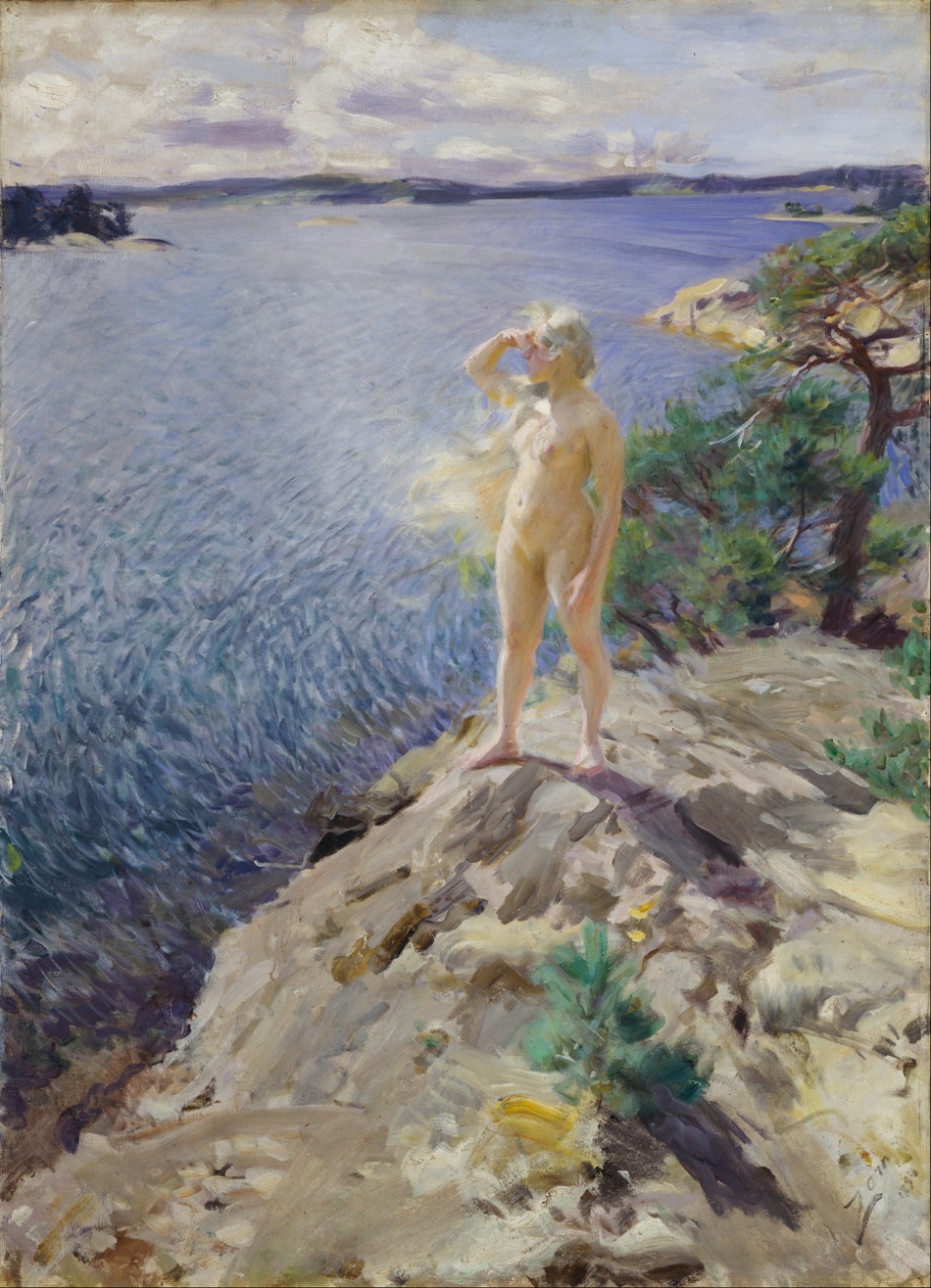
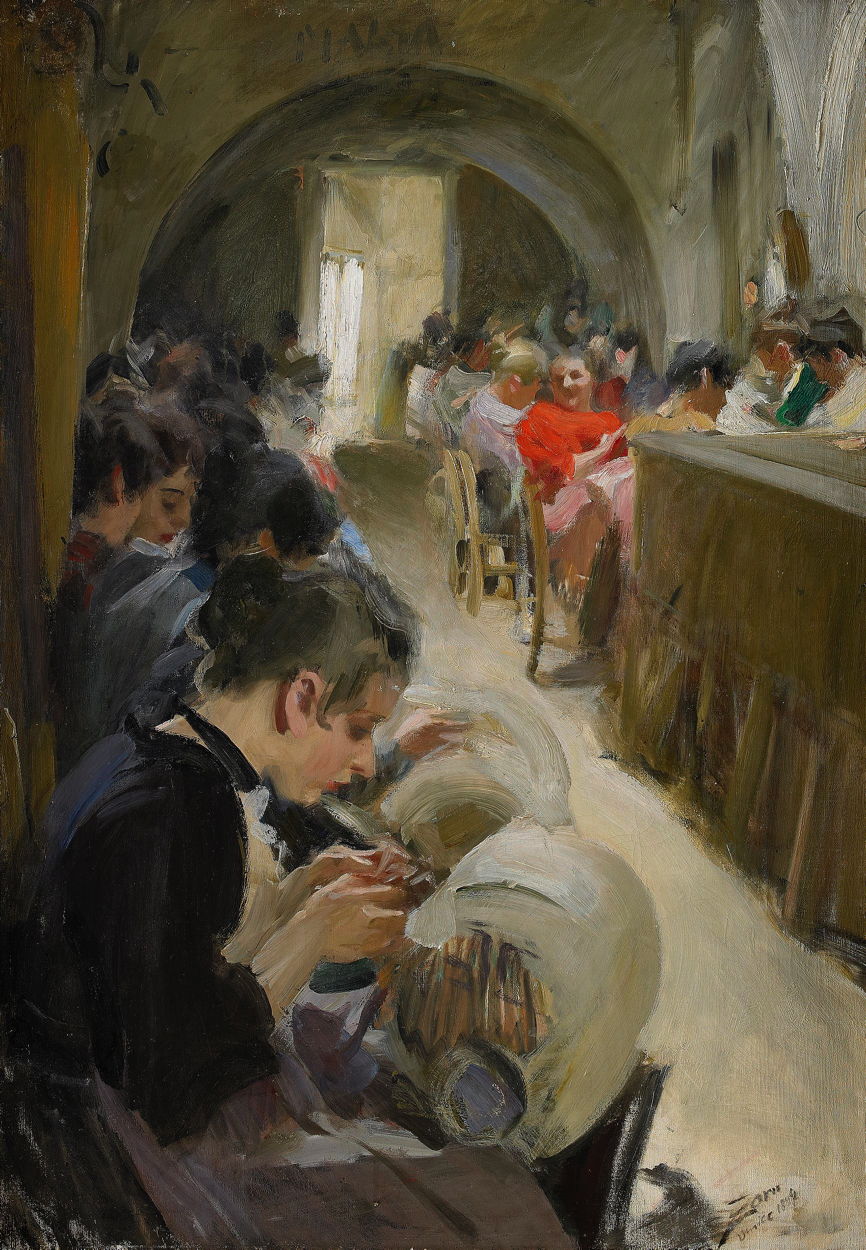
He finally settled back in his home town of Mora in 1896, only to return later that year to the US. In 1898 he painted the Swedish King, Oscar II, and returned to the US, where the following year he painted his famous portraits of Grover Cleveland and his wife. At the 1900 Paris World Fair he was commissioner of the Swedish art exhibition, and won its Grand Prix as both painter and print-maker. For good measure he also exhibited at the Berlin Secession exhibition.
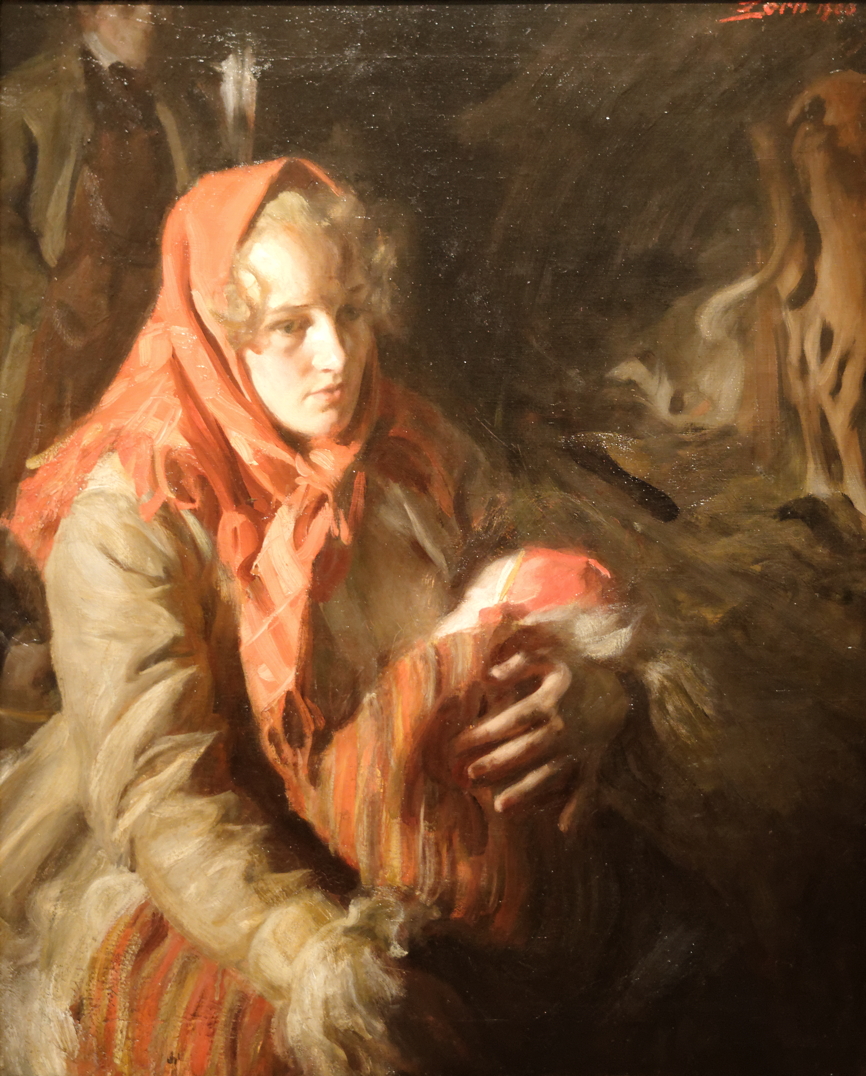
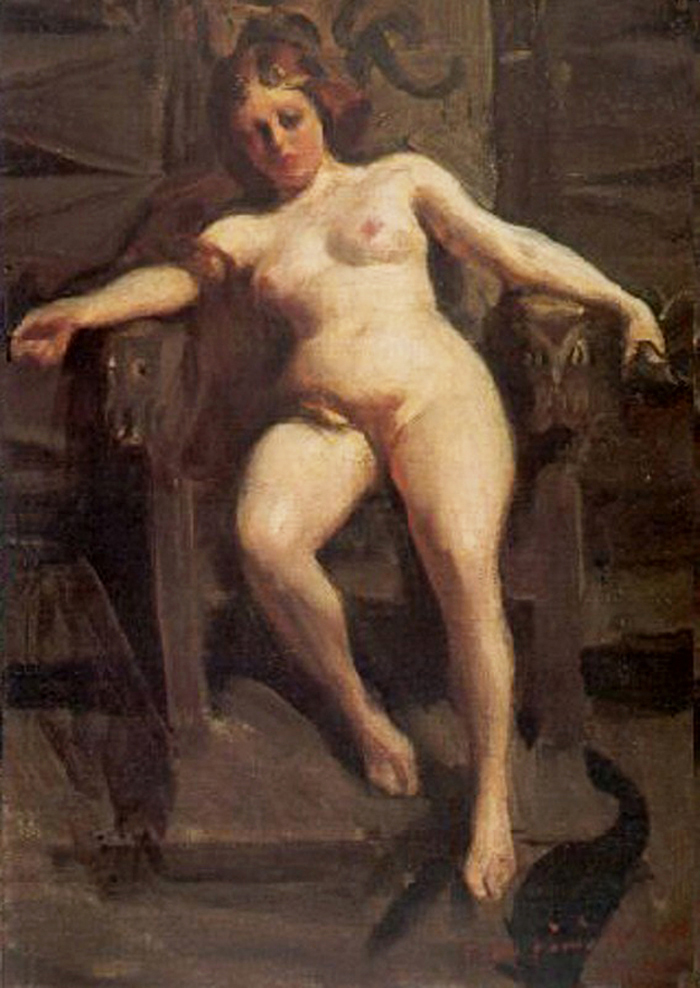
In 1903 his bronze statue of King Gustav Vasa was unveiled in his home town. In 1904 he attended a reception at the White House, and as a result made an etching of President Roosevelt. In the summer of 1905 he sailed in the Baltic with Albert Engström and Akseli Gallen-Kellela.
His first major retrospective exhibition took place in Paris in 1906, where he showed 166 works in all. He had another solo exhibition at the VIII Venice Biennale in 1909. He made his last journey to the US in 1911, where he painted President Taft. In 1919, following many other philanthropic works, he endowed the Zorn Award of the Swedish-American Foundation.
He died in 1920, the year that he was finally elected as a member of the Royal Swedish Academy of Fine Arts.
Anders Zorn earned a high reputation during his glittering career; although today he is perhaps more widely known for his buxom country-girl nudes, he is a painter’s painter: every brushstroke is placed perfectly, his edges carefully unsharpened where needed to focus the painting perfectly (something he probably developed in conjunction with photography), each painting perfectly composed, lit and coloured. At the height of his career he was gloriously impressionist, in his own unique style.
References
Wikipedia
The Zorn Museum site; if you ever get a chance to visit this museum, it has a superb collection of his works, and much more.
WikiArt
Cederlund J, Brummer HH, Hedström P and Ganz JA (2013) Anders Zorn. Sweden’s Master Painter, Skira. ISBN 978 0 8478 4151 6. (The perfect combination of excellent essays and superb illustrations, this large format book is the definitive modern account, although ostensibly just an exhibition catalogue. Highly recommended.)
Sandström B (2005) Anders Zorn, Nationalmuseum and NOK, Sweden. ISBN 978 9 127 11172 1. (A delightful little introduction, with plenty of good illustrations. In Swedish.)

